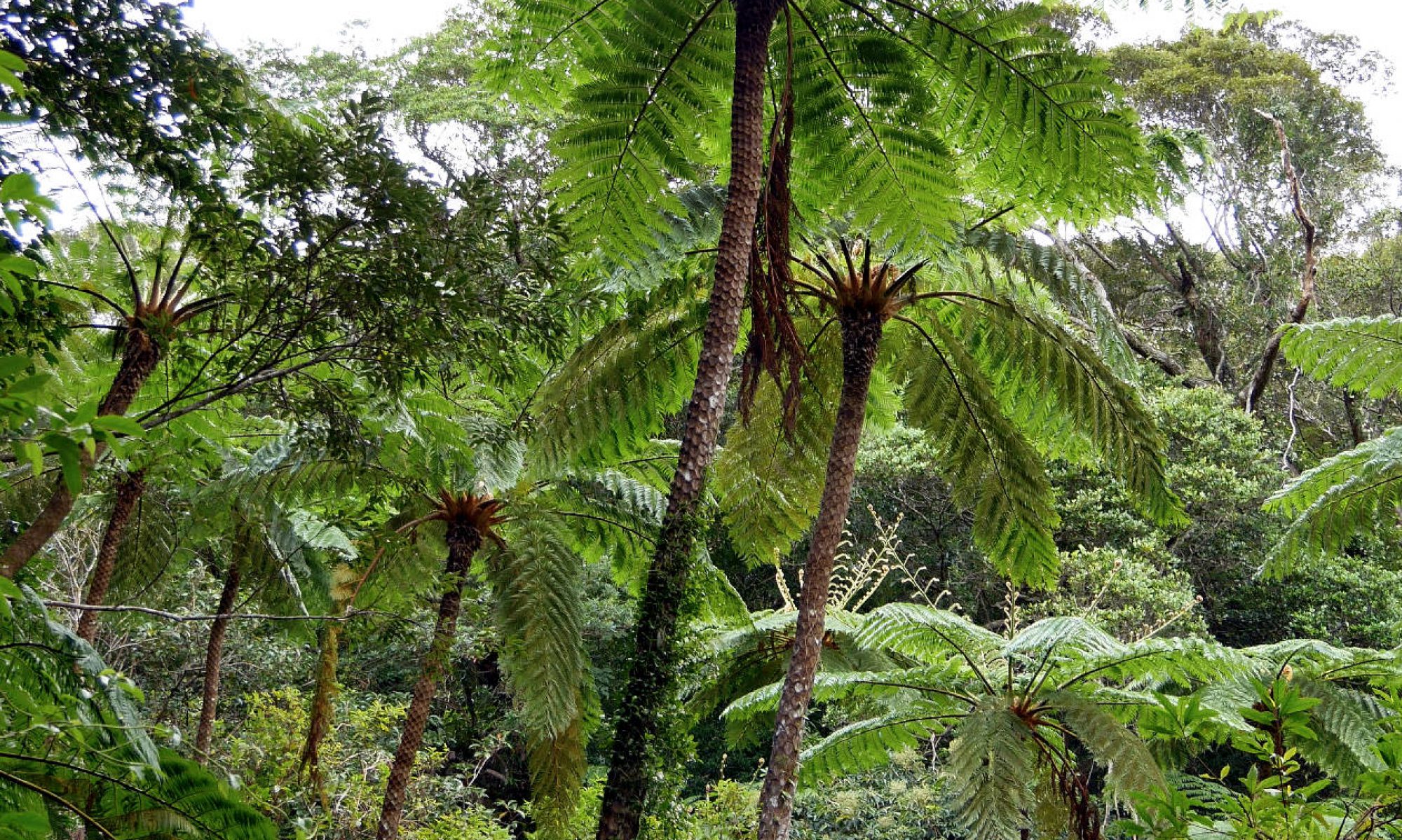Seldom heard of outside their native range, the Plagiogyria species of warm temperate Japan are common evergreen ferns of wet, humid forests. Their Japanese name is kijinooshida meaning “pheasant tail fern” since their broad, once pinnate fronds vaguely resemble the tails of those fowl that frequent the same woodlands. They are in fact delightful to the eye, yet elusive since they seem rather difficult in cultivation.
Plagiogyria japonica is a common, small evergreen fern with two distinct frond types: fertile (sporophyll) and sterile (trophophyll). The sterile fronds are more showy with broader pinnae, and are 8-30 cm long and 3-8 cm wide. The pinnae are simple, flat, and oblong. They extend nearly from the base of each stipe to the very tip of frond in opposing rows presented in a flat plain, and are longer at the center of the frond with each one 1-4 cm long and 5-8 mm wide.

The sterile fronds grow in a lovely rosette and usually have an elegant arch to them. The fertile fronds grow vertically, are much taller, and have much more narrow pinnae. They stand 15-45 cm high and 3-8 cm wide with each pinnae being 2-4 cm long and 3-5 mm wide. They too are born in opposite pairs on the stem but are highly reduced towards the stipe, and grow much looser on the stem as well. The croziers start out bright electric green to deep red and the new fronds often have this same color for some time. The plant grows from a simple branch less, creeping rhizome.
This fern is found from central Honshu (Kanto region) westward to Yamaguchi Prefecture and throughout Shikoku and Kyushu in any moist forest in deep to light shade, but is most frequent and vigorous near streams and seeps. It also seems to like rock walls and rock cuts provided there is ample water. Found from sea level to ~1000m.

These are very attractive ferns, very reminiscent of a Blechnum which I mistook them for at first. Like members of Blechnum, the dimorphism between fertile and sterile fronds is great. The fertile fronds are amazing to watch as they unfurl: they start all coiled up and slowly unfurl into exquisite lime green, wire-like structures. They are a sight to behold on a fine spring day with the sun back lighting them. Many months later, in late fall, they are heavy with brown spore. This fern is widespread through the mountains here. In all respects it is a most lovely small fern.

A larger relative of P. japonica is P. euphlebia. This medium size evergreen fern looks much like its smaller cousin having sterile fronds that are showy with broad pinnae up to 40-70 cm long and 15-25 cm wide. The alternating pinnae are elongated and pointed at the end. They are shiny and have slightly undulating margins. The fertile fronds grow vertically, are taller, and have much more narrow pinnae. Each is 40-80 cm high and 8-14 cm wide. The fertile pinnae are clustered at the top of the stipe, over half way up, and are relatively few in number. Both fertile and sterile fronds have stipes that are completely smooth. This is a clumping fern, and is often found in lose colonies of its own kind mixed with other ferns, including different Plagiogyria species.
Found in Japan from central Honshu (Kanto region westward to Yamaguchi Prefecture), Shikoku, Kyushu, to Okinawa, Korea, Taiwan, China, Vietnam, the Philippines, and Burma. In Japan it is found in similar forests as P. japonica, preferring moist to wet conditions, but always on a slope.

This is the biggest species of Plagiogyria in Fukuoka and also, to my untrained eyes, the most distinct. I can’t quite describe it, but the fronds are more airy looking with much longer pinnae that have wavy margins, so picking them out from other Plagiogyria is easy. It is neither common or uncommon in Fukuoka, though it is widespread through the mountains here. It commonly forms large colonies and is certainly a spectacular fern when full size. It is also often seen growing alongside P. japonica.

I have never tried to grow these species, nor have I seen them being grown. From the little I’ve gleaned on the internet and in books, they are difficult plants to keep. Given their habitat preferences, I would keep them continuously moist while being sure the growing medium is perfectly drained as well. They grow only in shady conditions and most commonly near streams, so the humidity should remain high. I wouldn’t expect either to be able to handle very cold winters however, they are perhaps hardy through USDA cold hardiness zones 8-10. Nevertheless, they are beautiful ferns and worth a try.
The name Plagiogyria comes from the Greek plagio meaning oblique, sideways, or the sides, and the Latin word gyra meaning round, turning, or a circle. Most likely this is a reference to the unfurling fertile fronds. Each little forming pinna uncurls from a tight circular coil on both sides of the rachis. At this stage they look like anything but a fern frond, but rather some otherworldly sculpture.
Without a doubt, these are outstanding ferns in many respects. From a horticultural point of view they are indeed desirable. To my knowledge no Plagiogyria are commonly cultivated however.

